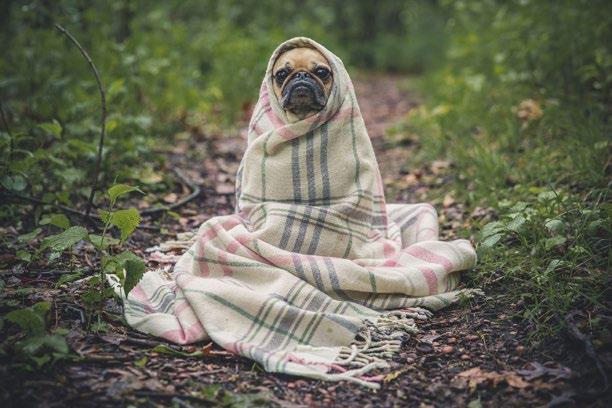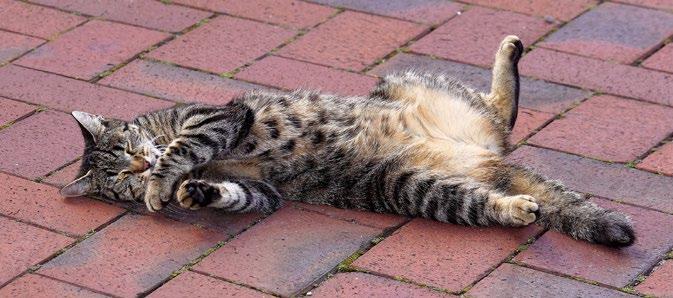
3 minute read
new* pets corner
PETS CORNER
BACK TO SCHOOL by Dr Steph Gowing
Advertisement
The summer holidays are coming to an end and the kids are going back to school, so now is an important time to help our pets adjust or re-adjust to being home alone! We need to consider this especially carefully with young animals, such as those adopted during lockdowns, furlough or working from home. However, paying attention to older pets who’ve got used to the change in routine is also essential to make sure they’re not unnecessarily distressed by our departure and absence.
How do we know if our cats and dogs struggle with our absence?
• Are they destructive when you’re gone - scratching at doors or sofas, going to the toilet outside the litter tray or anywhere they shouldn’t? • Do they yowl, whine, bark or meow more than usual when you’re leaving or after you’ve gone (try asking the neighbours, or getting a camera)? • Do they show more subtle distress like shaking, drooling, pacing around, being very clingy to you or hiding away, for example when you’re getting ready to leave? • Are there other signs you see on return such as wet paws from chewing, bald or less hairy spots from overgrooming, or completely untouched toys, treats, food or water bowls?

What can we do to help?
• Create a safe space, ideally where they often go by choice - for dogs this might be a comfortable crate or bed, for cats a secluded spot higher up such as a cat tree bed, or blanketed box on a favourite windowsill. Play the TV or radio if they’ll be worried by outside noise. • Make the space more fun when you’re gone! As well as a nice bed, water, space to roam, and a litter tray or food if appropriate, you can leave them treats or kibble trails to find, or toys they only get when you leave. • Gradually get them used to being apart from you, with stairgates, closed doors, short outings for a couple of minutes, then longer. Ensure if you work at home, you get them used to being left alone in the house too! • Make sure any separation from you is as positive as possible, and at the pet’s own pace. If they seem distressed, go back to the previous step, such as being in sight over the stairgate or leaving for one minute instead of five! • Get your pet used to signs of you leaving, from getting keys and shoes, putting on your coat to packing a bag, then stick around instead. Animals often worry they’ll be left when they recognise these signs and if there are particularly difficult parts for them, such as putting on your coat, spend time with them in your coat so they get used to it. • Try not to make leaving or returning home a big deal. Everyone loves an affectionate greeting or giving goodbye snuggles, but the more pets get worked up, the more anxious they can become when left. Ideally make greetings and goodbyes brief and quiet and pay attention to them only when they are calm. •Help your pet when changes in routine mean you’ll be away from home for longer than usual and have someone the pet knows such as a relative, neighbour or pet sitter pop in if you can. Try never to leave your pet alone longer than you’ve trained them for. •If your pet seems significantly distressed, please visit your vet for advice on a behaviourist referral or medications and supplements to help relieve anxiety. If you choose to contact a trainer before this, make sure they are ABTC and/or APBC registered.












